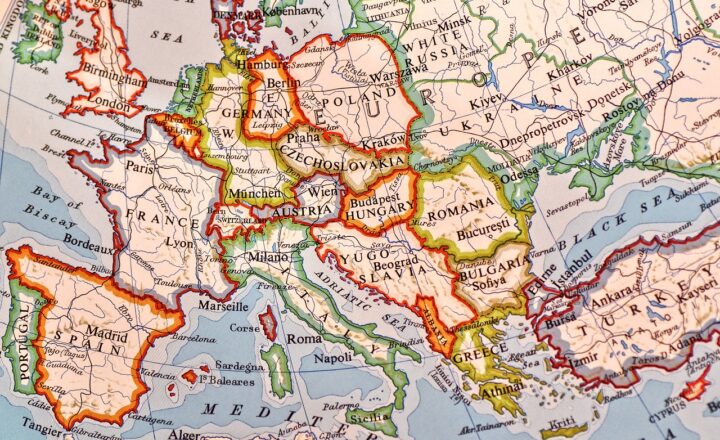The Evolution of Maps and How They Shaped Exploration and Discovery
November 16, 2024

Maps have long been more than mere tools for navigation; they are rich repositories of culture, history, and exploration. From the earliest cave drawings to the digital maps on our smartphones today, the evolution of maps reflects not only our understanding of geography but also our development as a civilization.
1. The Beginnings: Prehistoric Maps
The history of mapping can be traced back to prehistoric times when early humans used rudimentary sketches to depict the landscapes they traversed.
Evidence of these early maps has been found in ancient caves, where our ancestors sketched out hunting grounds, migratory paths, and territorial boundaries. These primitive interpretations of space were often communal in nature, representing collective knowledge rather than individual cartographic skill.
These early maps were primarily functional, used for practical purposes like hunting and gathering, but they also marked the beginnings of human curiosity about the world around them.
2. Ancient Civilizations: The First True Maps
By the time of the Babylonians, Egyptians, and Greeks, maps became more sophisticated. The Babylonians created clay tablets inscribed with early maps that depicted their cities and territories. Ancient Egypt saw the development of maps that represented their lands alongside the Nile, showcasing detailed information about agricultural zones.
Greek philosophers like Anaximander and Eratosthenes began formulating a more scientific approach to mapping. Eratosthenes even calculated the Earth’s circumference, laying the groundwork for later explorers. The Greeks established a system that cataloged the known world, gathering knowledge from travelers and merchants to create more accurate representations.
3. The Middle Ages: Maps as Art and Myth
During the Middle Ages, maps became a blend of art and mythology. The T and O maps of the medieval period illustrated a world divided into three continents—Asia, Europe, and Africa—highlighted by religious beliefs rather than geographical accuracy. These maps embodied the worldview of the time, reflecting religious rather than empirical knowledge, with Jerusalem at the center of the world.
Despite their inaccuracies, these maps served as a medium through which stories of exploration and adventure were communicated. They shaped both understanding and imagination, feeding curiosity about distant lands and peoples.
4. The Age of Exploration: Cartography as Science
The Age of Exploration brought mapmaking firmly into the realm of science. Navigators like Ferdinand Magellan and Vasco da Gama relied on increasingly accurate maps to traverse uncharted waters. The introduction of tools like the compass and sextant allowed for more precise measurements of latitude and longitude, drastically improving navigational techniques.
Maps became essential for trade and colonial expansion, as European powers raced to explore and conquer new territories. Cartographers like Abraham Ortelius and Gerhardus Mercator created comprehensive world maps that incorporated information from travelers, explorers, and merchants, significantly impacting global trade routes and political boundaries.
The Mercator projection, introduced in 1569, allowed for straight compass bearings, making it easier for sailors to navigate open waters. However, it distorted the size of landmasses, which brought about further debates in cartography regarding accuracy versus usability.
5. Modern Mapping: Technology and the Digital Era
The 20th century saw a revolution in mapping technology, with the advent of aerial photography and satellite imagery allowing for unprecedented detail and accuracy. The introduction of Geographic Information Systems (GIS) transformed the way we create and analyze maps, enabling complex data integration and spatial analysis.
Today, digital maps like Google Maps and GPS navigation systems have changed the way we interact with geography. These platforms allow users not only to find directions from point A to B but also to explore geographical features, businesses, and real-time data about traffic conditions.
With the rise of user-generated content and social media, mapping has also taken a participatory turn. Platforms like OpenStreetMap enable communities to contribute to cartography, fostering a shared global resource that continues to evolve with new information.
6. The Role of Maps in Shaping Our Understanding of the World
Each step in the evolution of maps displays the changing human context and its implications on understanding geography. Today, maps do not just show where we are but inform us about our surroundings, social structures, and global relationships.
Maps can reveal biases and ideologies, showcasing how people view their world. For instance, the choice of what to represent and how reflects cultural values and political agendas. This is why critical cartography has emerged, focusing on questioning traditional representations and promoting inclusivity in mapping.
Maps shape our understanding of space, identity, and belonging. They contribute to national identity and globalization, influencing how territories are perceived and inhabited.
7. Conclusion: The Ongoing Journey of Mapping
The evolution of maps is not just a narrative of technological advancement; it is an essential part of human history that guides exploration and discovery. As we stand at the crossroads of innovation and old traditions, maps continue to redefine our world. The journey of mapping has opened doors to cultural exchange and understanding while helping us navigate the complexities of the world we inhabit.
The future of maps lies in harnessing technology not just for navigation but also for fostering global connection and awareness. As we traverse the digital landscape, we must remember the stories and rich history encapsulated in every map, reminding us of our past while guiding us into the future.








